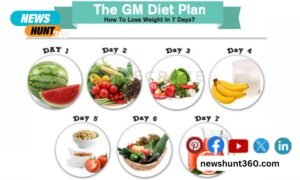I’ve been asked many times over the past few weeks on the so called ‘dilemma’ of sticking to an exercise program/routine during the month of Ramadhan. For the benefit of those who aren’t aware, Ramadhan is the ninth month in the Islamic Calendar and the entire month is spent fasting from dawn to dusk, by Muslims all over the world. Now, if you’re seriously into keeping fit, exercising, and weight training especially, you would know how important your meals are.. and therefore the ‘dilemma’. Many fitness enthusiasts, bodybuilders especially, go through a tough time this month because of the fear and reality of losing precious muscle mass because they’re not able to eat as efficiently as they should.
To Muslims out there.. while I read that there are many spiritual benefits to puasa ramadhan 2021 jatuh pada tanggal, I think that this is also a perfect time to exercise/practise your skills of ‘mind over matter’ by being in control of the body’s hunger and appetite. Not easy, I know.. but I believe that a healthy soul/spirit can only help rejuvenate the body, and not bring harm. So, with this positive mindset of ‘improvement’ in mind, here are my thoughts on keeping your fitness levels in check during the fasting month of Ramadhan.
Ramadhan is definitely not about losing weight, but weightloss can be a strong indication of whether you are fasting properly. I’ve heard of people who try to take the opportunity of this month to lose weight.. and although possible, I honestly believe that you’ll have a better success rate and more effective/productive weightloss if you were to attempt it while youre not fasting. I’ve also heard stories of people who end up gaining weight in Ramadhan.. now how do you let that happen? Geez..
What sort of fasting is it if you are eating the same amount/quantity in calories, than what you would be eating on any other day?
You can easily use this calculator, (the Basal Metabolic Rate & the Harris Benedict Equation on the page) to roughly determine how many calories you burn a day :
Now let’s say that you end up with a daily calorie requirement of 1950 calories. When you eat less than 1950 calories per day, you WILL lose weight. When you eat more than 1950 calories, you WILL gain weight. The overall law of nature does not change : you need to eat less than what you need, to lose weight. Simple.
When people fast, most people would be reducing their calories by the mere fact that they have only 4-5 hours to consume food, and they are unable to make up all the calories they would have eaten if they were capable of eating the full time that they were awake.
However, what I believe can be common among those who fast today is that there is a tendency for people to gorge themselves with fried foods which contain huge amounts of calories as the person tries to ‘make up’ for any missed calories in those few short hours.
Ask yourself right now.. are you going over your maintenance numbers or not? One obvious way to determine this without even having to whip out your calculator is if you are rubbing/patting your belly and having to loosen your belt after a meal.. you have obviously overeaten. Duhh!
Also, during the beginning of a long fasting period, you may lose a lot of water (which is natural), and therefore important to keep in mind that this is not an excuse to only stuff your face with more food just because your weighing scale tells you that you are lighter… because you haven’t lost any actual fat yet. It takes a 3500 calorie deficit to lose one pound, and if you spread this out, that means if you eat 500 calories less than the maintenance you calculated above, you will lose one pound of body tissue in that week.
Notice that I said body tissue, and not bodyfat. This is because when your body begins digesting itself, it rarely distinguishes between fat and muscle. This is also known as muscle catabolism, which is the breakdown of muscle mass as a result of injury/immobilisation or poor dieting techniques. If you’ve ever been admitted/bedridden in the hospital for over a week.. you’ll know what I’m talking about.
You would be surprised to know that muscle is something your body desires to get rid of. Biologically speaking, its active tissue and it requires constant food and attention from your body to keep muscle tissue alive… in other words.. its quite a ‘hassle’ for your body to preserve muscle tissue, and your body would rather get rid of muscle than consume its own fat (which sits comfortably on your stomach or thighs or – insert problem fatty area here:- requiring very little attention).
So here, once again, ‘reckless fasting’ for an extended period of time affects your body because relaxing too much, sleeping all day, and being lazy through most of the day when fasting really worsens muscle loss.
To maintain your physique and gains in a healthy manner, you simply need to send a signal to your body that the muscle you carry is NEEDED, and that signal is sent by remaining active. Yes, in other words, if you’re a fitness enthusiast who wants to preserve your precious muscle mass during the fasting month.. you need to do some exercise at least. If you have a desk job, there is no need to go to extremes, but perhaps try some pushups, chin ups, or lift a few weights to send a ‘signal’ to your body that the muscle you’re carrying.. is NEEDED.
For the hardcore bodybuilder and the fitness enthusiast who wants to keep his/her physique in check, this means that while you won’t be able to pack on any serious muscle mass or make any outstanding progress towards your goals, you will be able to MAINTAIN most of what you have gained so far. So use this month of fasting to get comfortable with your body, your food intake, and hopefully, though not 100 percent – you’ll be able to maintain your fitness level at where it is today. Once the fasting month is over… then, you can go all out once again. Hitting the gym hard the day fasting is over may be a bit dissappointing as you will notice that you wont be in top form.. but it will only be a matter of days before your muscle memory kicks in, and you’ll be exactly where you last stopped.
How do I maintain a basic/maintenance-type exercise routine during the fasting month? I’d like to point you to a write up found in this month’s newsletter at Fitness First, which can also be read at their website.
Some points that I personally feel is great advice is: – Group Exercise classes as are a great way to stay motivated even when your schedule is not flexible. – If you can only fit a 45-minute workout into your busy puasa ramadhan 2021 jatuh pada tanggal schedule, then make it a concentrated 45 minutes.




